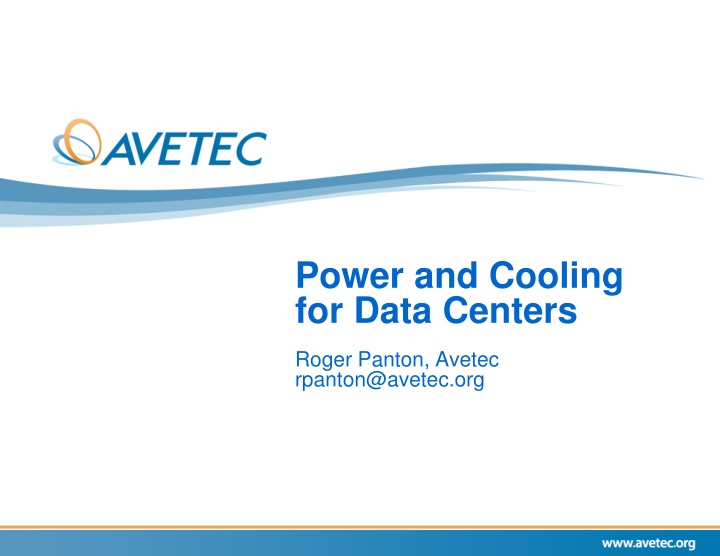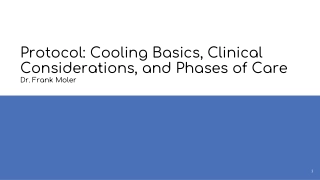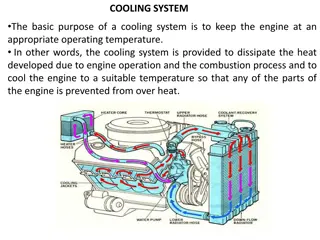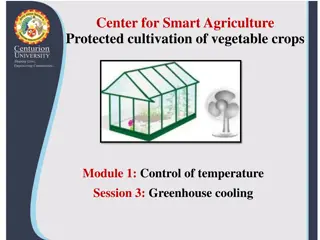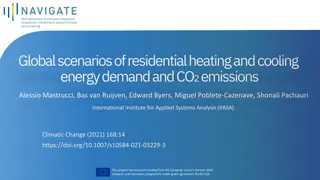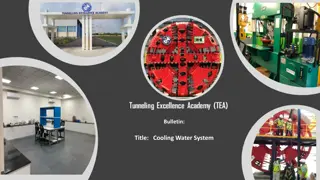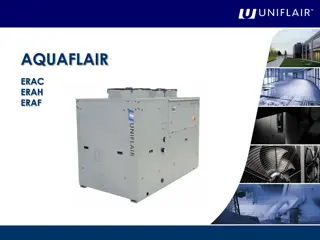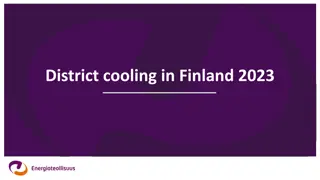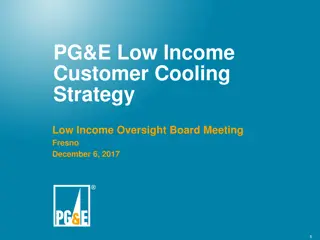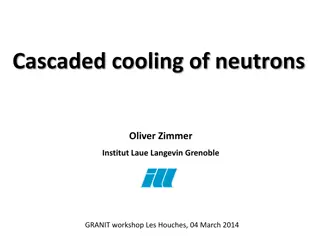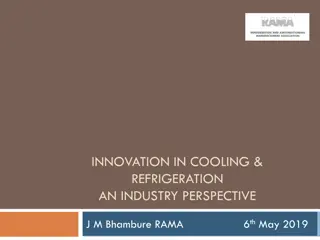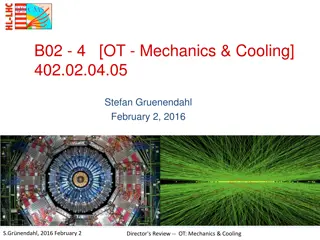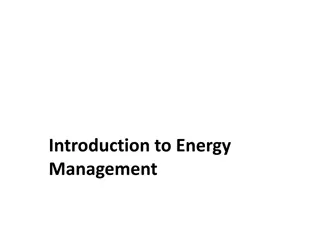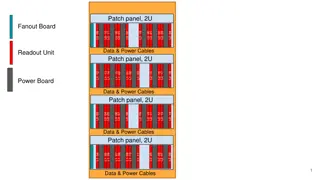Power and Cooling for Data Centers
Data centers face escalating power demands due to the exponential growth in usage. New research studies have been conducted to examine power and cooling issues, practices, and plans across different types of data centers worldwide. The findings aim to identify current practices and assess approaches to improve energy efficiency, particularly in cooling computer systems.
Download Presentation

Please find below an Image/Link to download the presentation.
The content on the website is provided AS IS for your information and personal use only. It may not be sold, licensed, or shared on other websites without obtaining consent from the author.If you encounter any issues during the download, it is possible that the publisher has removed the file from their server.
You are allowed to download the files provided on this website for personal or commercial use, subject to the condition that they are used lawfully. All files are the property of their respective owners.
The content on the website is provided AS IS for your information and personal use only. It may not be sold, licensed, or shared on other websites without obtaining consent from the author.
E N D
Presentation Transcript
Power and Cooling for Data Centers Roger Panton, Avetec rpanton@avetec.org
The Situation Data centers, including High Performance Computing (HPC), enterprise and telecommunication, are critical resources for competing in a world economy The 2007 EPA Report to Congress forecast indicated that unless energy efficiency improvement trends are not accelerated, energy consumption by data centers could nearly double again in five years By 2011, the energy consumption could reach 100 billion kilowatt hours (kWhs) This rate of increase could require building two additional power plants per year in order to provide the required power The demand for computer resources has led to a significant growth in the number of data centers
The Situation (Contd.) The explosive growth in the number and size of data centers is creating an unsustainable demand for power requirements The increased power requirements have led to a situation in which new data centers are being built primarily to increase power capacity or exploit lower local power costs, not because the current centers are running out of floor space
Avetec & IDC 2-Part Research Study Study #1: Power & Cooling Practices and Planning at HPC Data Centers Status: Completed late Spring 2009 Study #2: Power & Cooling Solutions for Enterprise and HPC Data Centers Status: Complete October 2009 REPORTS AVAILABLE TO ANYONE WHO IS INTERESTED! WWW.DICEPROGRAM.ORG
Research Studies: Objective Examine power & cooling issues, practices & plans of data centers on a worldwide basis and across all major categories of centers (HPC, enterprise, and communications) Explore the critical infrastructure issues facing data centers Identify and assess current practices and approaches, as well as plans to improve data center energy efficiency Especially cooling for computer systems in use today and planned over the next 2 to 5 years
Survey Sample and Methodology Survey includes 49 respondents representing 223 data centers as well as vendors Intent was to focus on data centers from industry, academia and government Data Center Size 43% Large 25% Medium 32% Small Respondents were from US, Europe and Asia Interviews were conducted by phone or in person
Key Findings: Internal Organizational Practices Who Controls & Pays the Power Bill? Typically, not the CIO less than half the centers PAY for costs directly Less than half track and report power & cooling costs The HPC & IT community needs more insight and accountability for the total cost of ownership (TCO) to include power and cooling usage If You Can t Measure It, You Can t Manage It * Only 34% of the centers use specific metrics and/or statistics to measure and report energy efficiency Few centers seriously track power and cooling efficiency However, 49% plan to improve the measuring and tracking of energy efficiency in their centers over the next 18 months (*Deming & Drucker)
How Data Centers Currently Track & Measure Power and Cooling Q: Describe how you track and report the energy efficiency of your data center? (selected responses): Not to good at it. Only track with usage, utilization of the power supplied to the data center. We monitor invoices and consumption rates. We track the power usage through the PDUs and the power supplied to the CRAC units. At this point energy efficiency is not reported. We calculate our costs by multiplying current energy rates with specs provided by respective vendors. It's a very manual process. Return on investment, IT performance, and facility utilization metrics. We monitor our electric bill, A/C cycling and temperature, and UPS load.
Key Findings: Internal/Organizational Practices Mandates to Improve: Majority of sites (71%) operate under relatively weak internal or external mandates to reduce energy consumption, but it is a top concern to data centers Only 29% of the data centers have a formal roadmap for improving power and cooling Whereas, 75% vendors have formal roadmaps for helping data centers achieve greater energy efficiency The Largest Non-Technical Barrier to Increased Energy Efficiency Is Financial Data centers see potential benefits, but also drawbacks in industry-standards
Key Findings: Data Center Consolidation & Building Power & cooling infrastructure limitations were the biggest barriers to increasing available HPC resources Nearly all data centers (96%) consider green design criteria important to their HPC system and data center planning process Half of the data centers are considering distributing their resources to multiple buildings or locations Approximately 67% of the sites are planning to expand or build new HPC data centers Data centers will increasingly be located in areas with the lowest power costs
Key Findings: Need for Evolutionary, but Verified Solutions Different Perspectives: 62% of vendors expected game-changing power and cooling technologies in the next five years Only 36% of user sites have these expectations DOE Roadmap Recommends Independent, Neutral Testing Body Most Data Center Managers Rely On Vendor-Supplied Specifications Most Data Centers Favor the Idea of An Independent Test and Validation Service 88% of vendors Are "Very Likely" Or "Somewhat Likely" To Use An Independent Test And Evaluation Body If A Suitable One Were Available
Roadmap for Improvement Q: Do you have a roadmap or framework of objectives and timeline to transition to a more efficient power and cooling data center? Data Centers Response Percent Yes 12 29.3% No 29 70.7% N = 41 Q: Do you utilize a roadmap or framework to support the transitioning of data centers to more efficient power and cooling? Vendors Response Percent Yes 6 75.0% No 0 0.0% Not Certain 2 25.0% N = 8 Vendors and Data Centers have different perspectives on the value of roadmaps
Key Factors in Improving Power Consumption Q: What are the key factors driving you to improve power consumption in your data center? Response Percent Increasing power and cooling costs 31 75.6% Increasing demand for existing data center resources 26 63.5% Plans to expand services offered by the data center 12 29.3% Plans to expand, update or build a new data center 20 48.8% Pressure from political, regulatory or external customers 9 22.0% Other 9 22.0% N = 41, Note that multiple responses were allowed. Costs of power and cooling is key factor
Non-technical Barriers Impacting Energy Efficiency Q: What non-technical barriers are impacting energy efficiency in your organization? Response Percent Financial constraints 21 51.2% Importance of data center efficiency at the executive level 8 19.5% Management policies and practices 7 17.1% External to our organization barriers (government rules and/or restrictions) Coordinated focus and culture between IT and non-IT groups Other 6 14.6% 4 9.8% 9 19.5% N = 41, Note that multiple responses were allowed. The major constraint is financial
Power and Cooling Driving Location of Data Centers Q: Is power and cooling costs, or infrastructure limitations at your current location causing you to consider a relocation or redistribution of your system and storage resources to multiple buildings or locations? Response Percent Yes, in additional space or buildings at our current location 10 25.0% Yes, in additional space or buildings regionally redistributed 5 12.5% Yes, in additional space or buildings nationally redistributed 5 12.5% Yes, to an outside provider 10 25.0% No 20 50.0% N = 40, Note that multiple responses were allowed. Costs of power and cooling is not a key factor in locating data centers
Industry Standards Benefits and Drawbacks A large potion of 88% see benefits to developing industry standards Energy savings could be used to buy more computing resources A smaller 66% see drawbacks ?????
Drivers and Barriers for Power and Cooling Improvements Key Drivers Current power capacity is not enough to meet increasing demand There are plans to expand or build a new centers There is a drive to reduce power costs or maintain them at the current level Key Barriers The current solution is considered adequate There is not enough concern about the issue at data centers The data center lacks budgetary responsibility for power costs Adequate metrics do not exist
